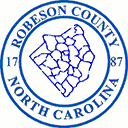A New Look at a Healthier Future
go.ncsu.edu/readext?626136
en Español / em Português
El inglés es el idioma de control de esta página. En la medida en que haya algún conflicto entre la traducción al inglés y la traducción, el inglés prevalece.
Al hacer clic en el enlace de traducción se activa un servicio de traducción gratuito para convertir la página al español. Al igual que con cualquier traducción por Internet, la conversión no es sensible al contexto y puede que no traduzca el texto en su significado original. NC State Extension no garantiza la exactitud del texto traducido. Por favor, tenga en cuenta que algunas aplicaciones y/o servicios pueden no funcionar como se espera cuando se traducen.
Português
Inglês é o idioma de controle desta página. Na medida que haja algum conflito entre o texto original em Inglês e a tradução, o Inglês prevalece.
Ao clicar no link de tradução, um serviço gratuito de tradução será ativado para converter a página para o Português. Como em qualquer tradução pela internet, a conversão não é sensivel ao contexto e pode não ocorrer a tradução para o significado orginal. O serviço de Extensão da Carolina do Norte (NC State Extension) não garante a exatidão do texto traduzido. Por favor, observe que algumas funções ou serviços podem não funcionar como esperado após a tradução.
English
English is the controlling language of this page. To the extent there is any conflict between the English text and the translation, English controls.
Clicking on the translation link activates a free translation service to convert the page to Spanish. As with any Internet translation, the conversion is not context-sensitive and may not translate the text to its original meaning. NC State Extension does not guarantee the accuracy of the translated text. Please note that some applications and/or services may not function as expected when translated.
Collapse ▲Did you know that September is National Childhood Obesity Month? According to the Centers for Disease Control and Prevention (CDC), about 1 in 5 children in the United States are obese. North Carolina has the 20th highest adult obesity rate in the nation, and the 15th lowest obesity rate for youth ages 10-17, according to the State of Obesity website. In Robeson County, neither youth nor adults get the recommended amount of nutrition or physical activity each day. In the Expanded Food and Nutrition Education Program (EFNEP) we teach families and individuals different ways to eat healthy and be more active.
Start with a plan – make a list of things you can do to improve your health. It can be anything, from drinking more water every day to walking around your yard for 15 minutes each day. Small changes in your daily routine can make great impacts as time goes on. Make it a family affair; get the whole family involved. Set goals with your children, and after each accomplishment, let them pick out a fun family activity.
Once you have a plan in action, start making things happen. Food plays a huge part in our health. Too much sugar and sodium intake can lead to heart problems, high blood pressure, diabetes, and stress on your body. MyPlate can be a great guide to follow to make sure you are getting the right amount of dairy, protein, grains, fruits, and vegetables in your daily meals. Start making meals at home together. Make meals that pack great nutritional value by including whole grains, lean protein, and colorful fruits and vegetables.
One of the biggest misconceptions about eating healthy is the food costs more, which is false. In EFNEP, we work with our participants to show them how eating healthy can be budget friendly. After you plan your weekly meals, shop your pantry first and mark off all the items you already have on hand. Second, look at the weekly sales at local markets. Farmers markets are a great place to get great produce that’s fresh and local. When looking at can goods, check the label. Look for labels that contain little to no sodium. Instead of going for chips and sugary snacks, grab fresh fruits and veggies to snack on. Put down the soda and go for water or low-fat milk. An average soda has over 10 teaspoons of sugar per serving. Portions also play a factor; know how much to eat. Read labels on items carefully to make sure you’re only eating the recommended amount.
Finally, work it out. Youth should get at least 60 minutes of physical activity daily, and the same goes for adults. Walking is a great way to start if you are not currently active, then you can build up to more vigorous activities. For more information about a healthier lifestyle, contact Joanna Rogers, Youth Expanded Food and Nutrition Education Program Assistant, at 910-671-3276, by email at Joanna_Rogers@ncsu.edu, or visit our website.




